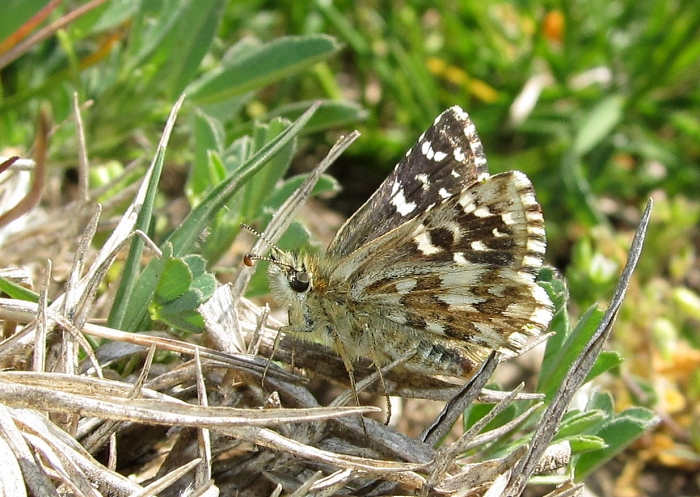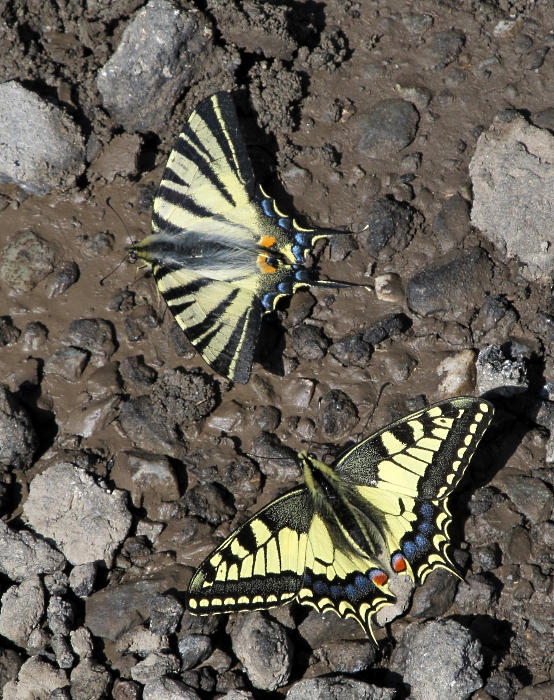Arrived back in Switzerland last night. It was lovely weather today so I headed off to two sites in the Rhône Valley, the first for rosy grizzled skippers and de Prunner's ringlets, the second for Camberwell beauties. Both produced the goods and much more besides, with 36 species between them. I left the second at about 15h00 because I wanted to check out a site on my old local patch near Gryon on the way home but that site was fenced off for the shooting club so I had to give it a miss. Nevertheless, 36 species for mid-April was definitely a good day. Here are some of them, beginning with the three target species.
Rosy grizzled skipper (
Pyrgus onopordi):



De Prunner's ringlet (
Erebia triaria)



(there are two in that picture)
This one shows how that third spot is not always entirely in line:

Camberwell beauty:

(this one had been around a bit ...)

(fresher)

(fresher still - EDIT - actually, this is the same one, though I photographed it about 400m away - so it can't be fresher!)

(a Camberwell beauty's eye view ...)

Some other species (I won't bore you with all 36!!):

(male baton blue)

(female baton blue)

(Provençal short-tailed blue)

(a swallowtail trampling a scarce swallowtail)


(more push-and-shove - this time both scarce swallowtails)

(a precocious chequered skipper)

(southern small white)

(not too many large tortoiseshells about at valley level now. This one looked very strange in flight, with all that white)

(dingy skipper)

(brimstone)
For the record, the full tally was:
Grizzled skipper (
malvoides), rosy grizzled skipper, dingy skipper, mallow skipper, chequered skipper, swallowtail, scarce swallowtail, small white, southern small white, green-veined white, Eastern Bath white, orange tip, clouded yellow, Berger's clouded yellow, brimstone, wood white, small copper, green hairstreak, common blue, Chapman's blue, baton blue, green-underside blue, holly blue, Provençal short-tailed blue, large tortoiseshell, small tortoiseshell, peacock, Camberwell beauty, comma, Queen of Spain fritillary, violet fritillary, Glanville fritillary, speckled wood, wall, small heath, de Prunner's ringlet.
Those who knew him will be sad to know my companion Kitten Cat died while I was away. He was an old cat and his kidneys have been failing for some time, though he was happy. The woman who looks after him while I am away said he had moved into the last stages so I asked her to put him to sleep to spare him that final, toxic period.
Guy













































